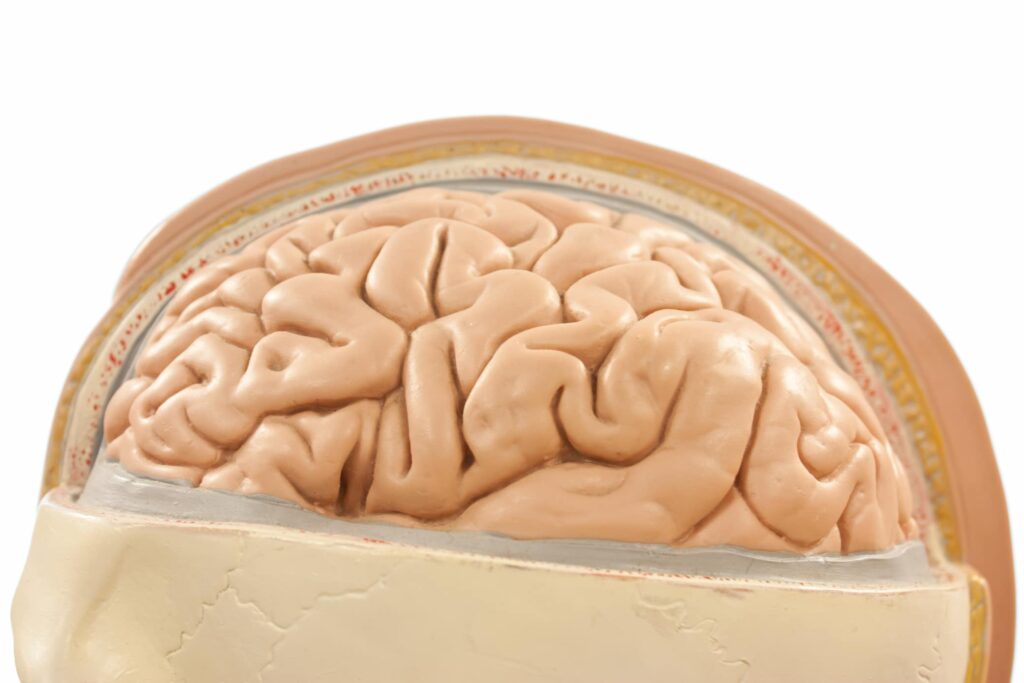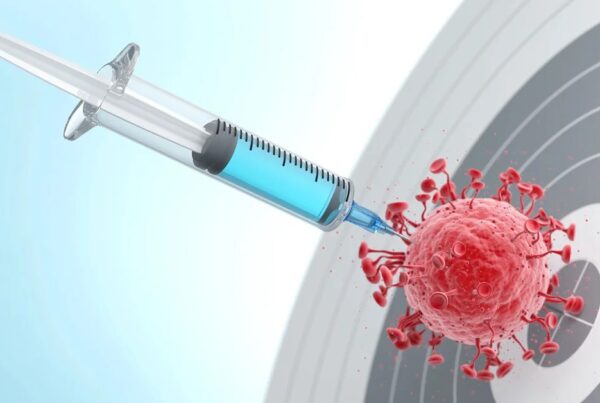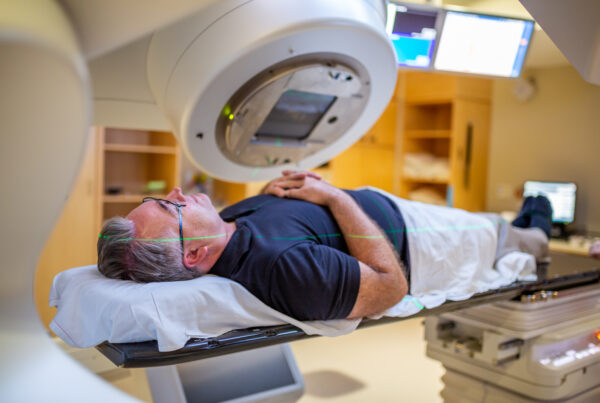Have you ever felt afraid of the phrase “brain tumor” and wondered about the surgical options available?
Brain tumors are among the most complex and challenging neurological diseases. This is due to their sensitive location inside the skull.
Whether these tumors are benign or malignant, they can cause a wide range of symptoms. These range from simple headaches to severe problems with movement, speech, vision, and even cognitive functions.
In many cases, surgical intervention to remove the tumor is the cornerstone of treatment. It aims to safely remove as much of the tumor as possible. And to preserve the patient’s neurological functions.
This procedure isn’t just a medical operation. It’s a journey that requires extreme precision. It needs advanced techniques.
This procedure is performed in advanced medical environments. These include Liva Hospital in Turkey. We use the latest technologies like computer-assisted surgery and 3D planning.

Brain Tumors and Surgical Resection Indications
To understand the indications for brain tumor resection, it’s first essential to know the types of these tumors and their impact on the brain.
Brain tumors can be classified into two main types:
- Primary Brain Tumors: These originate within the brain itself. They can be benign (non-cancerous), such as Meningiomas and Acoustic Neuromas. Or they can be malignant (cancerous), such as Gliomas, which are the most common and dangerous.
- Secondary Brain Tumors (Metastases): These spread to the brain from cancers in other parts of the body (such as the lung, breast, kidney, or skin). These tumors are always malignant.
Brain tumors cause symptoms through two main mechanisms. Either by direct pressure on vital parts of the brain due to their increased size.
Or by increasing Intracranial Pressure due to occupying space or obstructing the flow of cerebrospinal fluid.
Common symptoms include chronic headaches, nausea and vomiting, seizures, changes in personality or behavior, problems with vision or hearing, weakness in limbs, or difficulty with balance and speech.
Why Surgery to Remove Brain Tumors?
Surgery is the primary treatment option for many brain tumors. The main indications for tumor resection include:
- Confirming Diagnosis: Surgery is often necessary to obtain a tumor sample (biopsy). This determines its type, its degree of malignancy, and the most appropriate treatment plan.
- Relieving Pressure: Removing the tumor can relieve pressure on the brain and surrounding neural structures. This leads to immediate improvement in symptoms.
- Complete or Partial Tumor Removal: The main goal is to remove the tumor completely if possible. Especially in benign tumors, to achieve a cure.
In malignant tumors, surgery aims to remove as much of the tumor as possible. This increases the effectiveness of additional treatments like radiation and chemotherapy. - Improving Quality of Life: Even if the tumor cannot be completely removed, reducing its size can alleviate symptoms and improve the patient’s quality of life.
Making the decision to undergo brain surgery requires careful evaluation. This is done by a multidisciplinary team including neurosurgeons, neuro-oncologists, oncologists, and neurologists.
They consider the tumor’s location, size, type, and the patient’s general health condition.
Surgical Techniques for Brain Tumor Resection
Brain tumor surgery has seen tremendous advancements thanks to technological progress.
This has allowed neurosurgeons to access complex tumors more safely and precisely.
Surgery is no longer just opening the skull. It’s an advanced procedure that relies on a combination of techniques to ensure the best outcomes.
Craniotomy
This is the most common method. It involves temporarily removing a part of the skull bone to access the brain and remove the tumor.
After the tumor is removed, the removed bone piece is put back in place and secured with small plates and screws. This procedure can be performed in different ways:
- Image-Guided Craniotomy: A computerized navigation system (Neuronavigation) similar to a GPS is used. It precisely guides the surgeon to the tumor’s location.
This is based on MRI or CT scans of the brain. This increases the accuracy of resection and reduces damage to healthy surrounding tissues. - Awake Craniotomy: In some cases, especially when the tumor is near brain areas responsible for vital functions like speech or movement, the patient is kept partially awake during part of the operation.
This allows the surgeon to test brain functions in real-time during resection. This helps avoid damaging sensitive areas. - Surgical Microscope Use: Doctors use a high-magnification surgical microscope.
This provides a clear and detailed view of tiny blood vessels and nerves. This enables the surgeon to remove the tumor with extreme precision.
Endoscopic Surgery
This technique is used in specific cases, especially for tumors that can be accessed through natural openings or small incisions.
For example, some pituitary gland tumors can be removed through the nose and sinuses (Transnasal Endoscopic Surgery) without needing to open the skull. A thin tube containing a small camera and surgical instruments is inserted through a small opening.
At world-class medical centers like Liva Hospital in Turkey, the latest surgical techniques and advanced equipment are available. In addition, there is a team of highly experienced neurosurgeons.
This ensures comprehensive and precise care for brain tumor patients.
Preparing for Brain Tumor Resection
Preparing for brain tumor resection is a crucial stage. It’s as important as the surgery itself.
This preparation requires close coordination among the patient, their family, and the medical team. This ensures the best possible outcomes. And it reduces risks.
- Comprehensive Medical Evaluation: The medical team conducts a series of tests. This assesses the patient’s general health. And their suitability for surgery and anesthesia.
This includes complete blood tests, electrocardiogram (ECG), and chest X-rays. Any chronic medical conditions, such as heart disease, diabetes, high blood pressure, or kidney disease, are evaluated.
And necessary medications are adjusted to ensure the patient’s condition is stable before surgery. - Advanced Brain Imaging: Detailed brain imaging tests are performed. These include MRI and CT scans with contrast materials.
These images help identify the exact location of the tumor.
Also, its size and its relationship to vital brain structures. This helps plan the surgical path with maximum precision.
Sometimes, advanced techniques like functional MRI (fMRI) are used to identify language and motor centers. - Discontinuing Certain Medications: The patient will be asked to stop taking certain medications that may increase the risk of bleeding.
Such as blood thinners (aspirin, warfarin) or some herbal supplements. This is done a specified period before surgery. - Psychological and Mental Preparation: Brain surgery is a psychologically stressful experience. The medical team will provide support and counseling to the patient and their family.
They will answer all questions to alleviate anxiety. Patients suffering from severe anxiety may be asked to consult a psychiatrist. - Smoking and Alcohol: Smokers are advised to quit smoking several weeks before surgery.
Smoking can negatively affect the recovery process and increase the risk of complications. Avoiding alcohol is also recommended. - Preparing for Recovery: The patient and their family should plan for the recovery phase at home.
The patient may need assistance with daily activities. And minor adjustments to the home environment may be needed to ensure their safety and comfort. - Fasting: The patient must refrain from food and drink for a certain number of hours before surgery. This is according to the anesthesiologist’s instructions.
What Happens During the Procedure?
Brain tumor resection is a complex procedure. It requires the highest levels of precision and surgical expertise.
The operation is performed in an operating room equipped with the latest technologies. It takes several hours, depending on the tumor’s size and location.
- Anesthesia and Positioning: After general anesthesia is administered, the patient is placed on the operating table.
The position facilitates the surgeon’s access to the tumor. The head is carefully secured to prevent any movement during surgery. - Hair Shaving and Scalp Preparation: A portion of the hair in the surgical incision area is shaved.
Then, the scalp is disinfected with an antiseptic solution to reduce the risk of infection. - Surgical Incision and Craniotomy: The surgeon makes an incision in the scalp, muscles, and tissues.
Then, a special surgical drill is used to make small holes in the skull. These holes are connected with a surgical saw to temporarily cut a piece of the skull bone (craniotomy). - Accessing the Brain and Locating the Tumor: After lifting the bone flap, the protective membrane of the brain (dura mater) is opened. Neuronavigation and a surgical microscope are used to precisely locate the tumor.
They also plan a safe path to reach it. This avoids vital blood vessels and nerves. In some cases, intraoperative ultrasound may be used to define tumor margins. - Tumor Resection: The surgeon begins carefully removing the tumor. They try to remove as much as possible while preserving the surrounding healthy brain tissue.
In cases of awake craniotomy, the surgeon tests the patient’s functions (such as speech or movement) during resection. - Closing the Incision: After tumor resection and controlling any bleeding, the dura mater is closed.
The bone piece is put back in place and secured with small titanium plates and screws. Then, the layers of tissues, muscles, and scalp are closed with sutures or surgical staples. - Waking from Anesthesia: The patient is transferred to the recovery room. They are closely monitored until they regain full consciousness and their vital signs stabilize.
Recovery After Brain Tumor Resection
Recovery after brain tumor resection is a gradual process. It requires patience, intensive care, and commitment to a rehabilitation program.
The recovery path varies significantly from person to person. It depends on the tumor’s size and location. The complexity of the surgery. And the patient’s age and general health.
Early Stage (In Hospital – Days to Two Weeks):
- Intensive Care Unit (ICU): Many patients are transferred to the ICU after surgery for close monitoring of neurological functions, blood pressure, and oxygen levels.
- Pain Management: Pain is effectively controlled using prescribed medications.
- Neurological Monitoring: Frequent neurological examinations are performed. This assesses consciousness, movement, sensation, and other brain functions.
- Early Mobilization: The medical team encourages early and light movement (such as sitting and short walks). This is done with the help of physical therapists. It prevents complications like blood clots. And it improves circulation.
- Suture/Staple Removal: Surgical sutures or staples are usually removed about 7-14 days after surgery.
Intermediate Stage (At Home or Rehabilitation Center – Weeks to Months):
- Rehabilitation: Rehabilitation is the cornerstone of recovery. The patient may need physical therapy to regain strength and balance. Occupational therapy to regain daily skills. And speech therapy if speech ability is affected.
- Symptom Management: The patient may experience fatigue, headaches, or mood changes. These symptoms are managed with appropriate medications and lifestyle advice.
- Medical Follow-up: Regular follow-up visits are conducted with the neurosurgeon and oncologist. This monitors recovery. It assesses the need for additional treatments (such as radiation or chemotherapy). And it monitors any signs of tumor recurrence.
- Gradual Return to Activities: The patient is allowed to gradually return to normal daily activities. However, heavy lifting or strenuous activities should be avoided until the doctor’s approval.
Late Stage (Months to Years):
- Full Recovery: Recovery can continue for several months or even years, and some mild side effects may remain.
- Long-Term Monitoring: Long-term follow-up with the medical team is essential. It monitors brain health overall. And it detects any changes early.
- Psychological Support: Some patients may need psychological support or counseling. This helps them adapt to changes after surgery and the challenges of recovery.
At Liva Hospital in Turkey, a comprehensive medical team provides comprehensive and personalized rehabilitation programs for each patient.
This is in collaboration with physical, occupational, and speech therapists. It ensures effective recovery and improves the patient’s quality of life as much as possible.
Potential Risks and Complications
Despite significant advances in brain surgery, brain tumor resection is a major surgical procedure that carries some potential risks and complications.
The surgeon discusses these risks in detail with the patient and their family before surgery.
General Anesthesia and Surgery Risks
These risks are associated with any surgical procedure requiring general anesthesia, such as:
- Blood clots: Especially in the legs (deep vein thrombosis), which can travel to the lungs (pulmonary embolism) and be life-threatening.
- Allergic reactions: To anesthesia medications or materials used. As well as pneumonia or other respiratory problems.
- Cardiac problems: Such as irregular heartbeats or heart attack.
- Bleeding: Bleeding can occur inside the brain during or after surgery. It may require additional surgery or blood transfusion.
Brain or Nerve Damage
This is the most serious complication. Although rare, thanks to advanced techniques. Damage to healthy brain tissue surrounding the tumor can lead to permanent neurological dysfunction, such as:
- Cerebral Edema: Brain swelling after surgery is normal. But severe swelling can cause pressure and lead to complications. It is treated with medications.
- Seizures: Seizures can occur after surgery, even if the patient did not experience them before surgery. They are treated with anti-seizure medications.
- Cerebrospinal Fluid (CSF) Leak: In rare cases, the fluid surrounding the brain and spinal cord may leak from the surgical site. It may require surgical repair.
- Tumor Recurrence: Especially in malignant tumors, the tumor can reappear even after complete resection.
- Other problems: Paralysis or weakness in limbs, speech problems (Aphasia) or comprehension issues, and problems with vision or hearing.

Outlook and Outcomes After Brain Tumor Resection
The outcomes and prognosis after brain tumor resection are affected by several key factors.
These include the tumor type (benign or malignant), its size and location, the extent of complete resection possible, age, and the patient’s general health.
- Benign Tumors: In the case of benign tumors that can be completely resected, the prognosis is excellent in most cases.
The patient can recover completely and return to their normal life without the need for additional treatments. However, some benign tumors may require periodic follow-up to ensure no recurrence. - Malignant Tumors: For malignant tumors, the prognosis is more complex. Surgery aims to remove as much of the tumor as possible (total or subtotal resection).
This improves the effectiveness of complementary treatments like radiation therapy and chemotherapy. Surgery is often not a cure for malignant tumors.
But it is an essential part of a multi-modality treatment plan. This aims to prolong life and improve its quality.
Conclusion
Brain tumor resection is a medical achievement. It embodies the pinnacle of complexity and precision in neurosurgery.
It offers a vital glimmer of hope for patients facing the challenges of brain tumors, whether benign or malignant.
Although the journey requires meticulous preparation. And it goes through recovery phases that can be difficult. And it carries some risks.
The potential benefits are immense. These include symptom relief, improved quality of life, and often, complete recovery.
Liva Hospital is a leading center. It combines international expertise with modern techniques in brain tumor resection.
The hospital is equipped with surgical endoscopes and iMRI, and 3D navigation technologies. Surgery is sometimes performed awake if the condition requires it.
Additionally, the medical team works on intensive follow-up. And they adjust radiation and medical treatment later.
Frequently Asked Questions
Can all brain tumors be removed by surgery?
Not always. The possibility of complete tumor resection depends on several factors. These include the type of tumor, its size, and its exact location in the brain.
How long will I stay in the hospital after brain surgery?
The length of hospital stay varies. It depends on the size of the surgery, the type of tumor, and how quickly the patient recovers.
Will I lose all my hair after surgery?
No, in most cases, only a portion of the hair is shaved in the area where the surgical incision will be made. Hair is not removed completely from the head unless it is absolutely necessary for a specific condition. Hair will grow back in the shaved area after a period.
Will I be awake during brain surgery?
In most brain tumor resections (craniotomy), general anesthesia is administered, and the patient is completely unconscious.
What is the success rate of brain tumor resection?
The success rate varies significantly. It depends on the type of tumor (benign versus malignant), its size, location, and the surgeon’s experience.
Will I need additional treatment after surgery?
This depends largely on the type of tumor that was removed. In the case of benign tumors that have been completely resected, the patient may not need any additional treatment.



